Ficus Houseplants – How To Care For A Ficus Tree
Indoor ficus trees are a beautiful addition to your home’s decor but they do require some special care considerations.
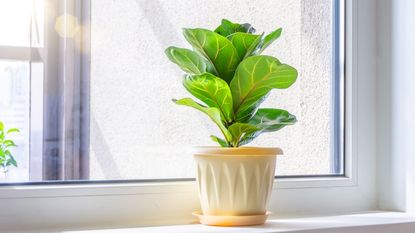

The potted indoor ficus trees sold in garden stores are usually weeping fig (Ficus benjamina), but other Ficus species are also readily available like the fiddleleaf fig (Ficus lyrata). These popular plants have graceful spreading forms and dense canopies of dark leaves. Indoor ficus trees are much smaller than their wild cousins and have a wide range of form, height, and growth habits. Read on to learn general information on how to care for a ficus.
How to Care For a Ficus Tree
Care for indoor ficus trees varies slightly among species. Since the majority are weeping figs, we will use these plants as the basis for our care instructions.
Weeping figs have a reputation for being finicky, but they are fairly easy to care for if given the appropriate light, water, and cultural care. Indoor ficus trees are considered delicate because of their light sensitivity; if they are moved to an area with more or less light, they often drop their leaves. In time, new ones grow.
Water and Light Requirements
Most ficus trees enjoy bright indirect or filtered light with variegated varieties happily able to take medium light. Bright, direct light may result in scalding of the leaves and leaf loss. Ficus trees also cannot tolerate low temperatures or drafts. They need to be kept in temperatures above 60 degrees F. (16 C) and actually prefer temperatures above 70 degrees F. (21 C). Cold drafts from windows or doors will harm them, so make sure to place them somewhere where drafts will not be an issue.
Soil and Fertilizer Needs
Like so many houseplants, weeping figs require soil with excellent drainage. Use a medium that is both porous and fibrous, or make your own mix from three parts fertile to one part coarse sand and one part peat. Many grow weeping figs without fertilizer, but it’s best to use a water-soluble fertilizer every month or so during the growth period.
Humidity & Temperature
Weeping figs like warm temperatures, to 70 degrees F. at night and 85 (21 and 29 C.) during the day. For the best ficus plant care, provide high humidity, with 40% relative humidity set as the minimum for undisturbed growth.
Note that the more light and the warmer the temperature, the more humidity and water the tree requires. Regular misting or setting the ficus tree on a pebble tray filled with water is a great way to increase humidity. Cold drafts from windows or doors will harm ficus plants, so be sure to place them where drafts are not an issue.
Gardening tips, videos, info and more delivered right to your inbox!
Sign up for the Gardening Know How newsletter today and receive a free download of our DIY eBook "Bring Your Garden Indoors: 13 DIY Projects For Fall And Winter".
Ficus Pests, Diseases & Problems
Weeping ficus can attract a number of pests, including scale, aphids, mealybugs, thrips and spider mites. “Sap” dripping from a ficus houseplant is actually honeydew from an invading pest,and is a sure sign of an infestation. Treating the plant with neem oil is a good way to handle any of these pest issues.
They are also subject to several diseases caused by bacteria, including leaf spots and crown gall, as well as some caused by fungus, like anthracnose and blight. As noted above, indoor ficus trees can drop foliage when the light or temperature in their environment changes. Leaf drop is a ficus tree’s standard reaction to stress, whether it’s from any of the following:
- Under or overwatering
- Low humidity
- Too little light
- Relocation or repotting
- Drafts
- Change in temperature (too hot or cold)
- Pests
Pruning, Repotting and Propagating Ficus Plants
Ficus plant care can include shaping or even hard pruning. The trees react well to this, but reduce water levels to severely pruned plants.
Weeping figs like to be a little rootbound. If the indoor plant gets too rootbound, you will notice smaller leaves and slowing growth. In that case, ficus care required repotting the plant in late winter or early spring. Propagate ficus species by air layering or tip cuttings.
Types of Ficus Trees
Weeping fig: Ficus benjamina. This graceful little tree has drooping branches.
Indian rubber plant: Ficus elastica. A tough, shorter houseplant with an erect stem and large leathery leaves.
Decora: Ficus elastica ‘Decora. The heavy leaves have prominent, depressed veins with ivory/red midribs.
Fiddleleaf fig: Ficus lyrata. An easy-to-grow fig with deep green waxy fiddle-shaped leaves.

Teo Spengler has been gardening for 30 years. She is a docent at the San Francisco Botanical Garden. Her passion is trees, 250 of which she has planted on her land in France.
-
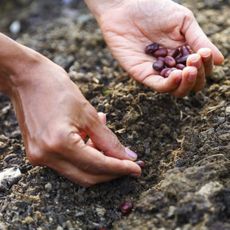 Best Seeds For Survival – Grow A Garden That Can Outlast Almost Anything
Best Seeds For Survival – Grow A Garden That Can Outlast Almost AnythingUncertain about the future? Why not try seeds? They’re easy to save and provide a safety net for good times and bad.
By Bonnie L. Grant
-
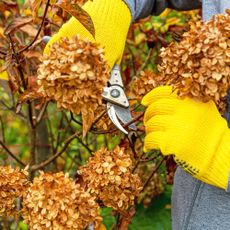 Should You Cut Back Perennials In The Fall? – When To Tidy Up And When To Leave Plants Alone
Should You Cut Back Perennials In The Fall? – When To Tidy Up And When To Leave Plants AloneIt's tempting to prune plants during the fall garden cleanup, but is it the right thing to do? Discover whether to make the cut – or embrace the mess.
By Amy Grant
-
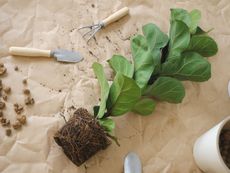 Tips For Repotting Fiddle Leaf Fig Plants
Tips For Repotting Fiddle Leaf Fig PlantsFiddle leaf fig roots don’t mind tight quarters, but when it’s time to repot, learn here how to do it.
By Teo Spengler
-
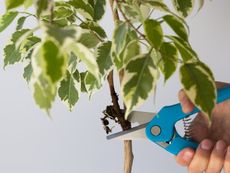 Propagating A Ficus Tree: How To Propagate Weeping Fig
Propagating A Ficus Tree: How To Propagate Weeping FigIf you grow a weeping fig, you may want to share with friends or just keep its growth under control with propagation. Read on for more.
By Mary Ellen Ellis
-
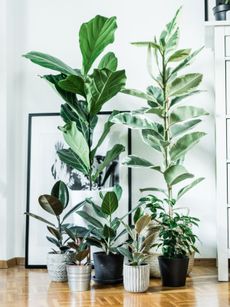 Growing A Long-Lasting Ficus: Caring for A Large Ficus Tree Indoors
Growing A Long-Lasting Ficus: Caring for A Large Ficus Tree IndoorsHave you ever wondered how big a potted ficus tree can grow? If so, click here to find out more!
By Mary Ellen Ellis
-
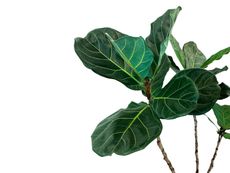 Splitting A Ficus Tree: How To Divide A Large Ficus
Splitting A Ficus Tree: How To Divide A Large FicusSplitting a ficus tree isn’t as difficult as it sounds. Click the following to learn how and when to split a big ficus.
By Teo Spengler
-
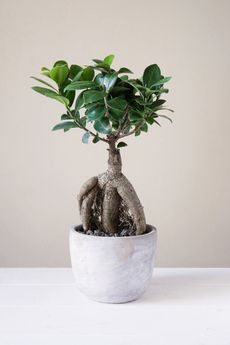 Ginseng Ficus Pruning: How To Grow A Ficus Ginseng Bonsai Tree
Ginseng Ficus Pruning: How To Grow A Ficus Ginseng Bonsai TreeIf growing and caring for a bonsai tree seems too difficult, consider diving into the miniature tree world with a ginseng ficus. Growing ginseng ficus as a bonsai tree is a great idea for a hobby for yourself or as a gift for a fellow gardener. Learn more in this article.
By Mary Ellen Ellis
-
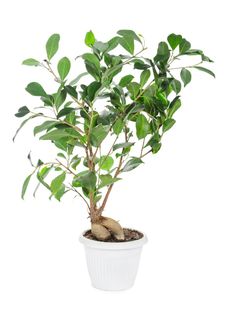 Ficus Ginseng Tree Info – Information On Ficus Ginseng Care Indoors
Ficus Ginseng Tree Info – Information On Ficus Ginseng Care IndoorsWhat is a ficus ginseng tree? It is native to south and eastern Asian countries. It is in the Ficus genus but has a chubby trunk, which is similar to ginseng roots – hence this common name. Click this article for more ficus ginseng tree info.
By Bonnie L. Grant
-
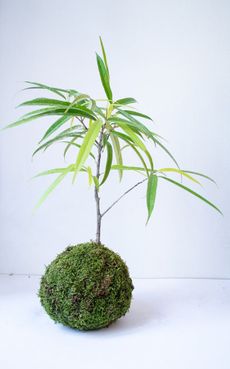 What Is A Longleaf Fig – Learn About Longleaf Fig Care
What Is A Longleaf Fig – Learn About Longleaf Fig CareWhile there are many smaller species of houseplants available, some growers choose larger plants, like ficus. When planted into containers, many tall plants create lush, dense foliage displays. The longleaf fig is just one example. Learn about growing it here.
By Tonya Barnett
-
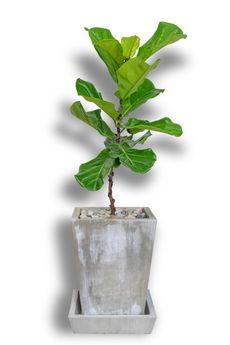 Fiddle Leaf Fig Pruning: When To Trim A Fiddle Leaf Fig Tree
Fiddle Leaf Fig Pruning: When To Trim A Fiddle Leaf Fig TreeWondering how to keep your fiddle leaf fig “fit as a fiddle?” Fiddle leaf fig pruning is one good way to keep the plant in top form by giving it good form. So, let’s get a sharp pair of pruning shears in hand and learn how to prune fiddle leaf fig in this article.
By Shelley Pierce